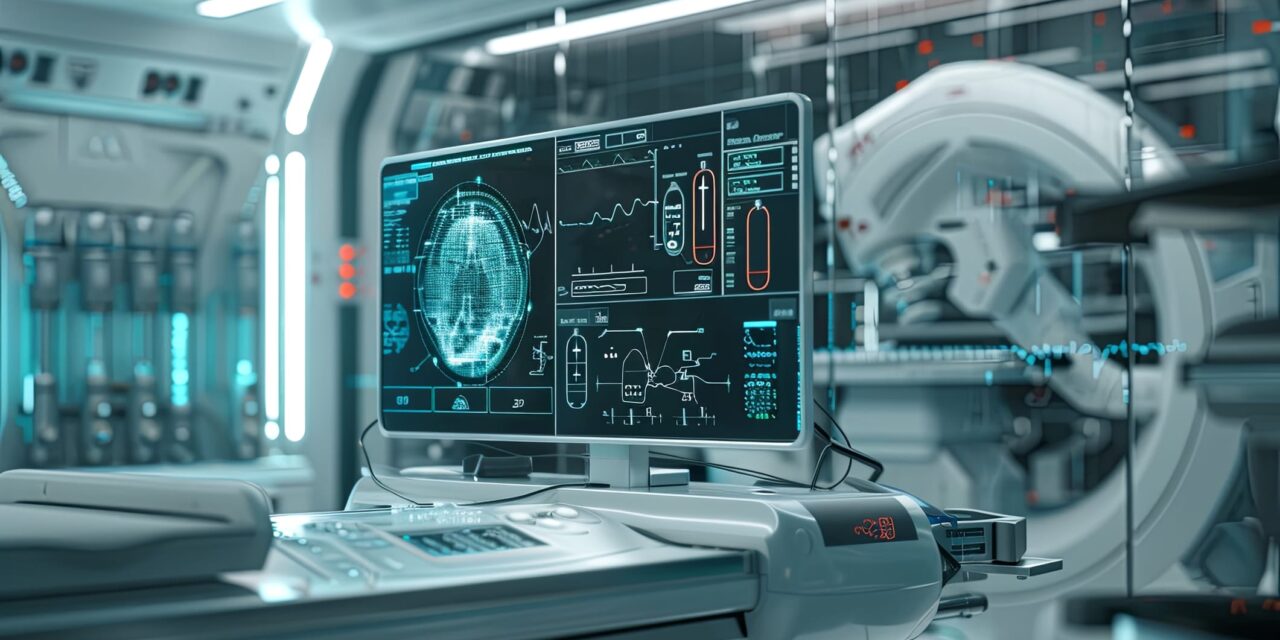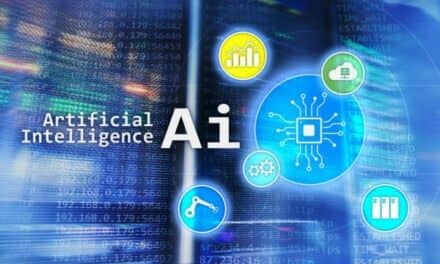AI tools are enhancing medical imaging by identifying subtle patterns and anomalies, giving staff an extra layer of support without taking over the diagnostic process.
By Dev Nag
Artificial intelligence (AI) isn’t a sci-fi episode or something out of an Aldous Huxley novel. It has been here since the 1950s, and a version of AI has been in medicine since the 1970s. AI, as we know it today—a language-learning machine—has been slowly integrated into many healthcare practices, and the COVID-19 pandemic accelerated this growth, thanks to telemedicine and advanced AI chatbots.
AI is already changing the way healthcare professionals interpret scans, diagnose illnesses, and plan treatments, especially in radiology. A 2024 study found that over half of radiologists (52%) actively embrace AI in their practice, while 93% view it favorably overall, signaling broad professional support for its integration into clinical imaging.1
These tools are not experimental; they’re becoming integral to daily clinical workflows, improving outcomes and efficiency. Another study found that AI-assisted radiologists were 12% more accurate in identifying breast cancer compared to unaided professionals.2
With radiology departments processing millions of scans each year, even incremental improvements can have a wide-ranging impact on diagnosis and patient care.
A Second Set of Eyes, Only Sharper
In clinical practice, subtle anomalies can often be the difference between catching a disease early and missing it entirely. AI tools, trained on thousands or even millions of imaging datasets, can spot patterns that human eyes might overlook. These algorithms don’t tire; in fact, they improve over time as they view more images and continue to learn and identify patterns.
This doesn‘t mean radiologists are out of a job; it enhances the radiologist’s judgments, offering another layer of analysis that improves confidence in diagnoses.
Take, for example, lung cancer detection. Traditional CT scans may reveal tiny nodules, but distinguishing between benign and malignant growths isn’t always straightforward. AI models can detect changes in size, shape, and texture to help radiologists determine whether further testing is needed.
It’s not about replacing clinicians—it’s about empowering their decision-making.
Faster Results When Every Minute Counts
Speed is critical in many clinical settings, particularly in trauma, stroke, and emergency care. AI significantly reduces the time required to process and interpret imaging data. Tasks that once took hours can now be completed in minutes, helping healthcare teams make informed decisions faster.
Hospitals using AI-based tools for stroke triage, for instance, can detect hemorrhages or blockages in brain scans almost immediately. That kind of acceleration directly supports earlier treatments, which can preserve neurological function and improve recovery outcomes.
Personalized Imaging for Personalized Care
AI is also pushing the boundaries of personalized medicine. By analyzing a patient’s unique anatomy and pathology, AI models enable clinicians to design treatment plans tailored to the individual, rather than relying on generalized protocols.
In oncology, for example, AI can help define tumor boundaries with remarkable accuracy, allowing surgeons to operate with more confidence. It can also track how a tumor responds to therapy, providing data that informs whether the treatment should continue, change, or be stopped altogether.
This level of granularity opens the door to care that is not only more precise but also more compassionate, responding to what each patient’s body actually needs.
Spotting Disease Before Symptoms Appear
Early detection is one of the most promising benefits of AI in medical imaging. Trained on extensive databases, AI can recognize disease markers and patterns that indicate early-stage illnesses, long before symptoms appear or traditional scans raise concerns.
In mammography, some AI systems have demonstrated the ability to detect signs of breast cancer up to two years earlier than standard reads. This leads to earlier diagnoses, more treatment options, and, in many cases, better outcomes.
The same holds true for chronic illnesses, such as diabetic retinopathy or cardiovascular disease, where early signs in retinal or cardiac imaging can now be detected with increasing accuracy, thanks to AI models.
Always Learning, Always Evolving
Unlike static software, AI systems improve over time. As they continue to process more data across diverse patient populations and imaging technologies, they evolve, becoming more nuanced, inclusive, and reliable.
This adaptive quality allows AI to grow alongside the field itself, staying relevant and responsive to the needs of both patients and practitioners. As regulatory frameworks mature, more providers are integrating these tools in a way that respects privacy, ensures equity, and aligns with ethical standards.
The Future of AI in Medical Imaging
The role of AI in medical imaging continues to expand rapidly. As healthcare systems around the world continue to digitize, the demand for smarter, faster diagnostic tools will only grow.
In the near future, we can expect AI models to become more specialized, trained not just on broad image categories but on highly specific conditions and population data. This could improve accuracy across age groups, ethnicities, and rare disease presentations that conventional datasets have historically underserved.
Another step forward is real-time diagnostics. AI is already accelerating image interpretation, but in the next few years, we may see systems that analyze scans in tandem with the imaging process itself, providing guidance or alerts while the scan is still in progress. This could be especially valuable in time-sensitive scenarios like trauma care or neonatal intensive care.
Integration with other data sources, such as electronic health records, genetic profiles, and wearable health data, is also on the horizon. As AI becomes more capable of synthesizing multiple data points, it could help form a more complete picture of a patient’s health, turning imaging from a standalone step into part of a continuous, personalized feedback loop.
Regulatory bodies are also catching up. Frameworks that ensure safety, transparency, and equity in AI tools are evolving, and future approvals are likely to emphasize fairness and explainability just as much as accuracy.
One thing is certain: The future of medical imaging isn’t about replacing the radiologist. It’s about giving them better tools, deeper insights, and more time to focus on what matters most: patient care.
About the author: Dev Nag is the CEO/Founder of QueryPal. He was previously on the founding team at GLMX, an electronic securities trading platform in the money market, with over $3 trillion in daily balances. He was also CTO/founder at Wavefront (acquired by VMware) and a senior engineer at Google, where he helped develop the back-end for all financial processing of Google ad revenue. He previously served as the manager of business operations strategy at PayPal and also launched eBay’s private-label credit line in association with GE Financial. Dev received a dual-degree BS in mathematics and BA in psychology from Stanford. In conjunction with research teams at Stanford and UCSF, he has published six academic papers in medical informatics and mathematical biology.
References
- Liu H, Ding N, Li X, et al. Artificial intelligence and radiologist burnout. JAMA Netw Open. 2024 Nov 4;7(11):e2448714.
- Lång K, Josefsson V, Larsson AM, et al. Artificial intelligence-supported screen reading versus standard double reading in the mammography screening with artificial intelligence trial (MASAI): a clinical safety analysis of a randomised, controlled, non-inferiority, single-blinded, screening accuracy study. Lancet Oncol. 2023;24(8):936-44.





